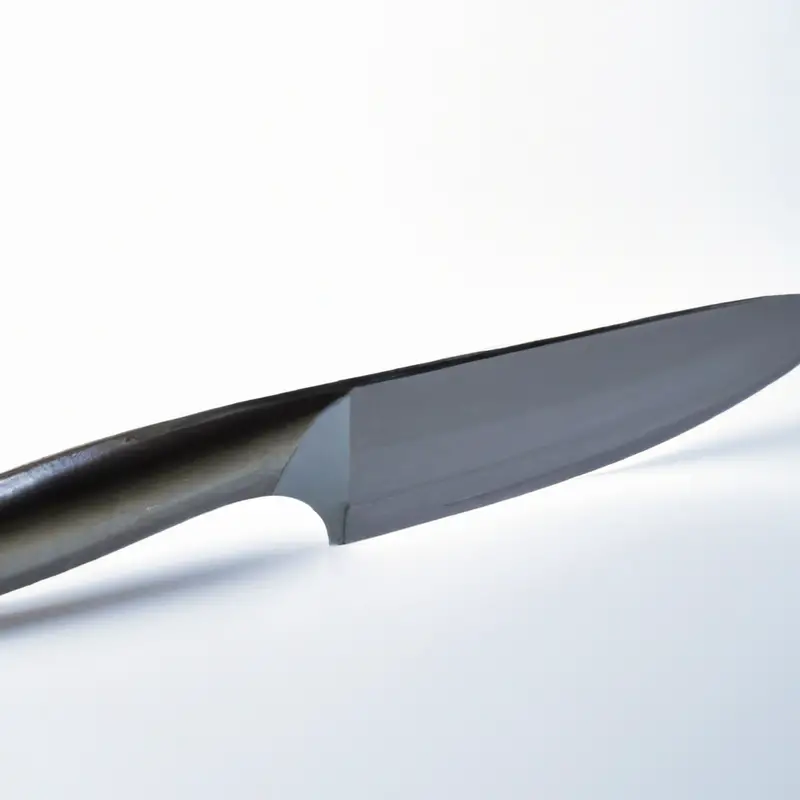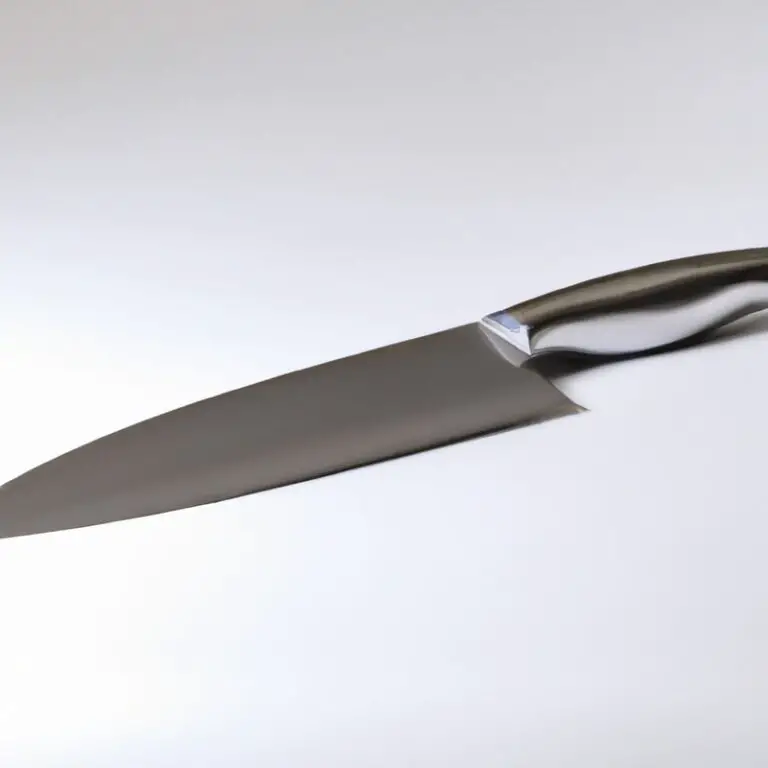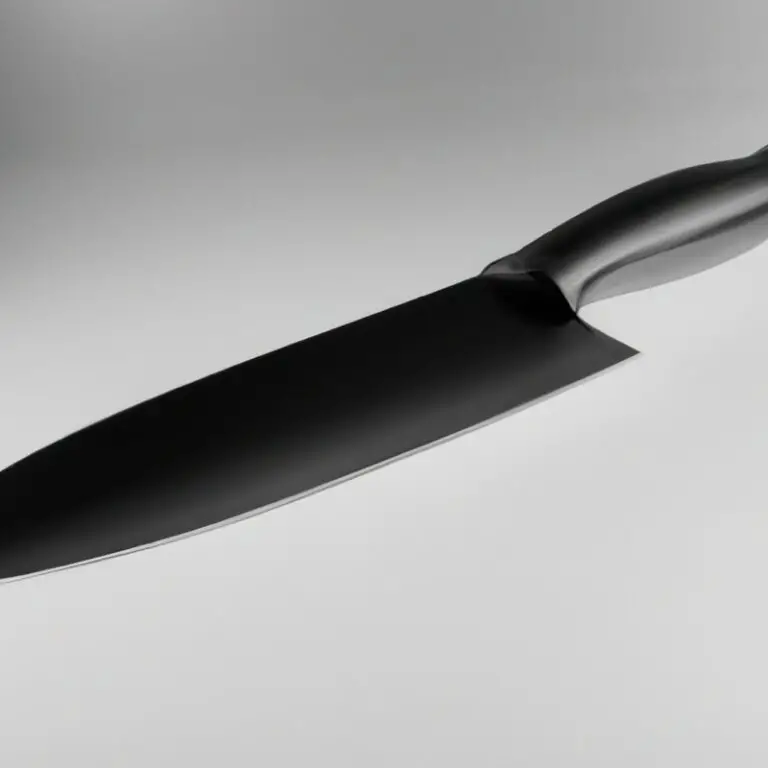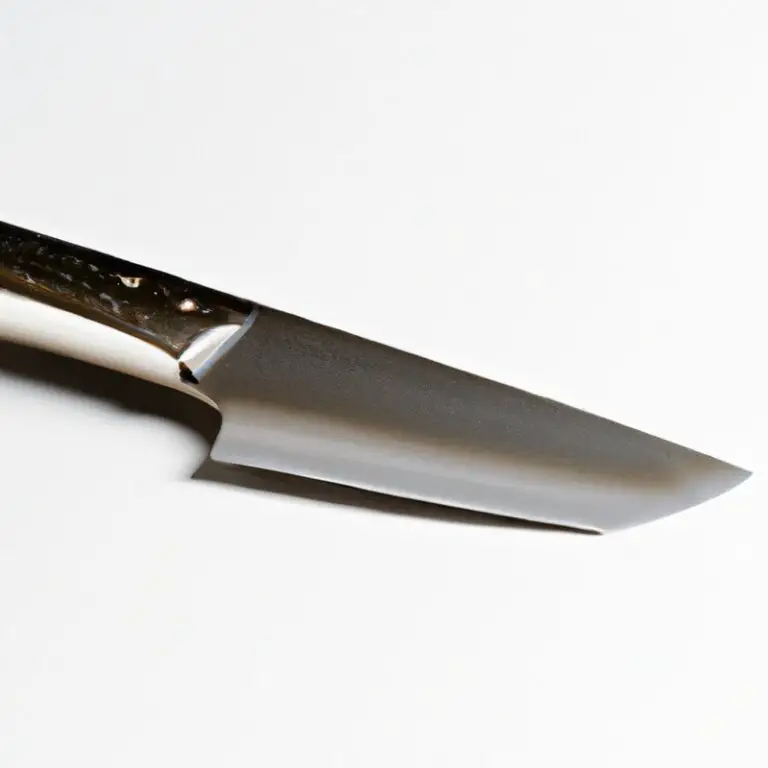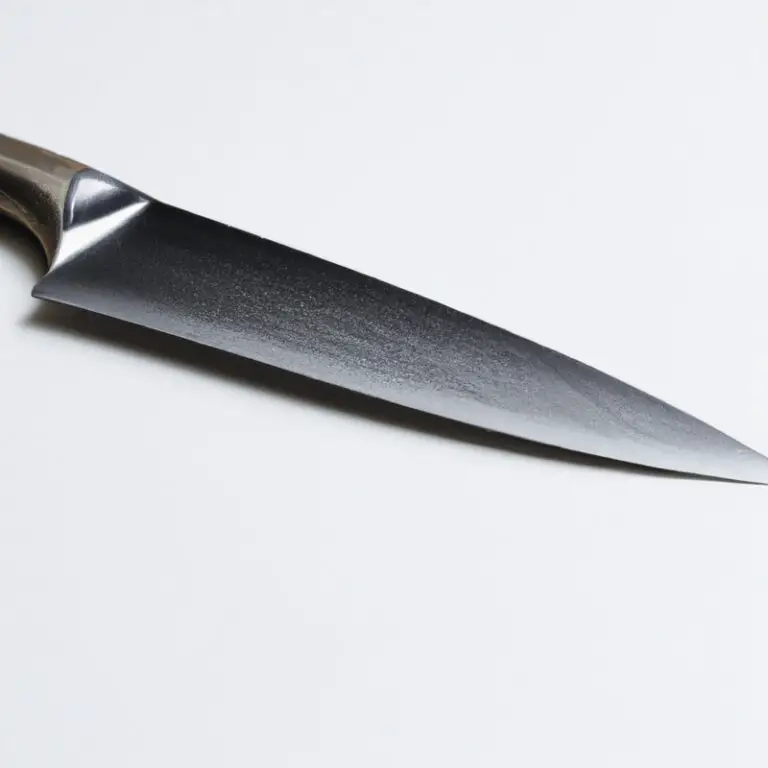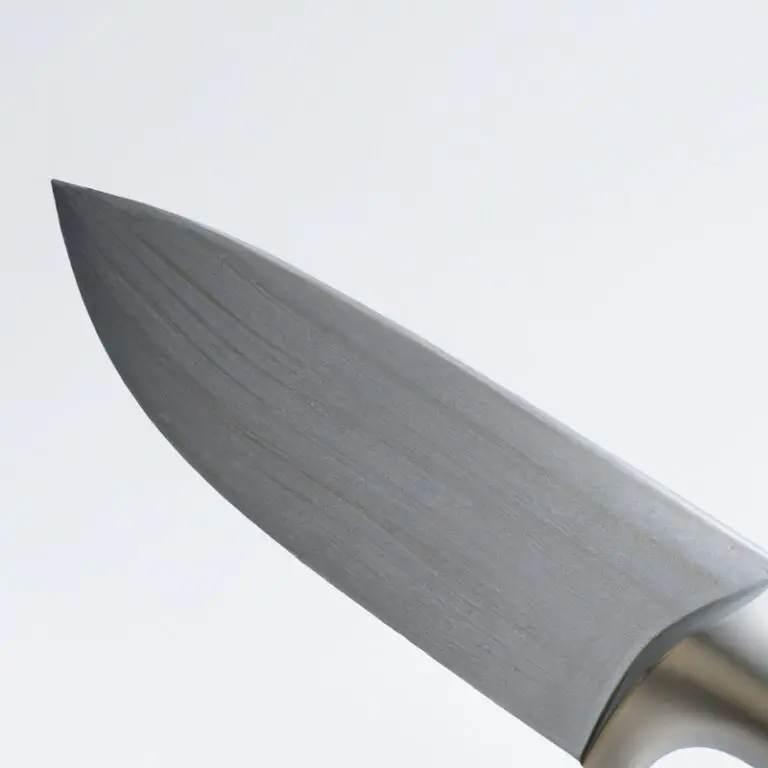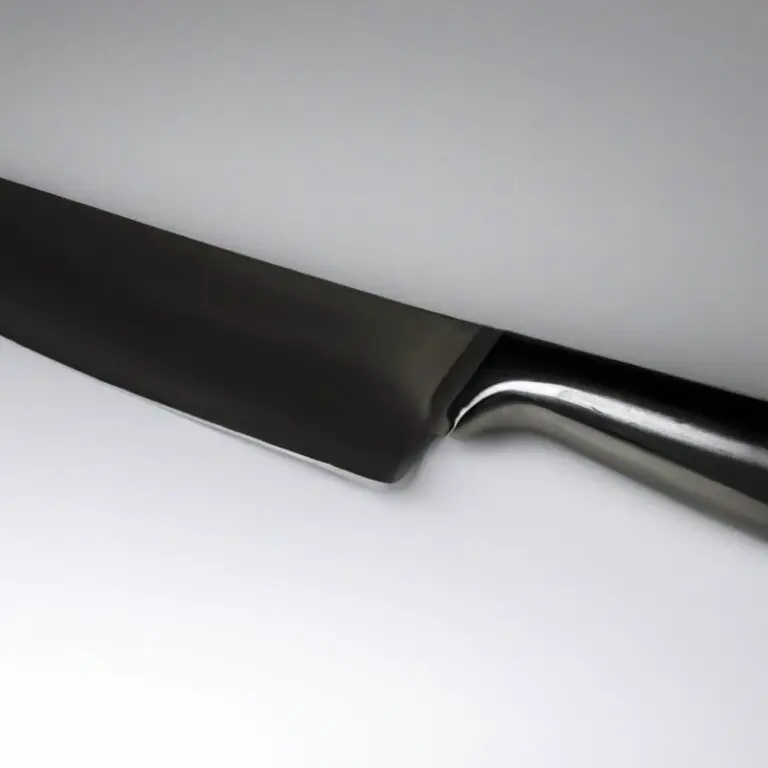Can a Santoku Knife Be Used For Filleting Fish? – Tips
Key Takeaways:
- While a Santoku knife can be used for filleting fish, it is not the best option due to its wider blade and lack of flexibility.
- A fillet knife, with its narrow and flexible blade, allows for cleaner and more precise cuts when filleting fish.
- Investing in a high-quality fillet knife can greatly improve your fish filleting skills and ensure the perfect cut every time.
- It is important to select the right tool for the job to achieve the desired outcome, whether it is cooking or preparing food.
Are you tired of trying to fillet a fish with a dull, unreliable knife? Enter the Santoku knife – a versatile and stylish option that has taken the culinary world by storm.
But can this Japanese all-purpose knife handle the finesse of fish filleting?
As a seasoned chef and avid fisherman, I’m here to share my personal experiences and insights into the world of Santoku knives and fish filleting. From understanding the anatomy of the knife to comparing it to other filleting knives, I’ll guide you through the pros and cons of using a Santoku for filleting fish and offer some expert tips to get the most out of your knife.
| Santoku Knife | Fillet Knife | |
|---|---|---|
| Blade Shape | Flat with a slightly curved belly | Long, thin, and flexible with a curved tip |
| Blade Length | Between 5 to 7 inches | Between 6 to 11 inches |
| Primary Use | All-purpose kitchen knife, suitable for slicing, chopping, and dicing | Specifically designed for filleting fish, removing skin, and trimming bones |
| Flexibility | Not as flexible as a fillet knife, which may make filleting tasks more difficult | Flexible blade allows for easy maneuverability and precision cuts |
| Handle | Ergonomic and comfortable, suitable for various hand sizes and grip styles | Typically designed for a comfortable grip during prolonged use |
Understanding the anatomy of a Santoku knife
The Santoku knife is a versatile kitchen tool that originated in Japan. It has a distinctive and unique shape that sets it apart from other types of knives.
The blade of a Santoku knife typically ranges between 5 and 8 inches, and it has a flat edge with a slightly curved tip.
The spine of a Santoku knife is generally wide and flat, which provides leverage and control over the knife while cutting. The blade’s thickness is consistent throughout, making it sturdy and durable.
Most Santoku knives have a full-tang construction, which means the blade extends through the handle for better balance and control.
The handle of a Santoku knife varies in length and can be made of different materials, such as wood, plastic, or metal. Some Santoku knives have an ergonomic design that is comfortable and easy to grip.
Understanding the anatomy of a Santoku knife is crucial for its proper use and maintenance.
It is essential to know the parts of the knife and how they work together to make accurate and precise cuts. Knowing the anatomy will help you choose the right Santoku knife for the job and properly care for it to ensure its longevity.
The different types of fish filleting knives and their purposes
There are different types of knives that can be used to fillet fish. Each knife has a specific purpose and design that makes it suitable for a particular type of fish and filleting technique.
- Fillet knife: This knife has a long, narrow and flexible blade which makes it ideal for filleting different types of fish, especially larger ones. The blade can easily glide along the bones to produce clean and precise cuts.
- Boning knife: This knife has a shorter blade and is sturdier than a fillet knife. It is used to remove bones from the fish fillet.
- Serrated knife: This knife has a jagged edge that makes it ideal for cutting through tough skin and bones. It is commonly used to fillet salmon and other oily fish.
- Chef’s knife: A versatile knife that can be used for many different tasks in the kitchen, including filleting fish. However, it is not as efficient as a fillet knife, and may not produce clean cuts on larger fish.
It is important to choose the right type of knife for the fish you’re filleting and the technique you intend to use to avoid damaging the fish or producing uneven fillets.
Pros and cons of using a Santoku knife for filleting fish
Pros:
- A Santoku knife’s sharp, thin blade allows for precise cuts and easy control when filleting fish.
- The wide blade provides enough space for the fish to be flipped over, making it easier to get a full fillet.
- Its versatility makes it useful for other kitchen tasks, not just fish filleting.
Cons:
- Santoku knives are not specifically designed for fish filleting, so there are limitations to their use.
- The flat blade can make it difficult to maneuver around bones and joints of the fish.
- The lack of a flexible blade may lead to loss of meat or uneven cuts.
While a Santoku knife can be used for fish filleting, it is important to consider its limitations and use caution to prevent injury or loss of meat. For optimal fish filleting, it is best to invest in a boning or fillet knife specifically designed for the job.
How to properly sharpen a Santoku knife for fish filleting
To properly sharpen a Santoku knife for fish filleting, start by choosing the correct sharpening stone. A medium-grit (1000-3000) stone is best for general maintenance, while a fine-grit (4000-8000) stone is ideal for honing and finishing the edge.
Next, wet the stone with water or honing oil and position it securely on a flat surface.
Hold the knife at a 15-20 degree angle against the stone, with the blade facing away from you. Using a smooth, continuous motion, move the knife back and forth across the stone, maintaining a consistent angle and applying gentle pressure.
Repeat on the other side of the blade until a burr forms on the opposite side.
Flip the knife over and repeat the process, starting with the medium-grit stone and finishing with the fine-grit stone. To test the sharpness, lightly run your finger along the blade’s edge to feel for any snags or rough spots.
Properly sharpening your Santoku knife regularly is essential to maintain its sharpness and ensure it performs its best when filleting fish.
The importance of maintaining and caring for your Santoku knife
Proper maintenance and care of your Santoku knife is crucial to ensure its longevity and optimal performance. A well-maintained Santoku knife will not only last longer, but it will also provide precise cuts every time you use it.
Here are a few tips for properly maintaining and caring for your Santoku knife:
- Clean your knife after each use to prevent any damage or corrosion. Avoid using abrasive sponges or harsh chemicals that can scratch or damage the blade.
- Sharpen and hone your knife regularly to maintain its sharpness and ensure a clean cut.
- Store your knife in a knife block, knife sheath, or on a magnetic strip to minimize the risk of damage to the blade.
- Use a cutting board that won’t dull or damage the knife’s blade.
By following these simple steps, you can ensure your Santoku knife maintains its sharpness and performance for years to come. Remember, a properly cared-for knife is a safer and more efficient tool in the kitchen, whether used for filleting fish or other culinary purposes.

Tips and tricks for using a Santoku knife for fish filleting
When using a Santoku knife for fish filleting, there are some important tips and tricks to follow:
- Use a sharp Santoku knife: A dull knife can damage the fish and make filleting more difficult. Sharpen your knife before each use and hone it regularly.
- Cut against the fish’s grain: Use the Santoku knife to make smooth, even strokes against the grain of the fish. This will help to prevent the flesh from tearing or breaking.
- Use the flat part of the blade: Hold the blade of the Santoku knife flat against the cutting surface and use a smooth motion to cut the fish. This will help to create straight, even cuts.
- Keep the knife at a low angle: Hold the Santoku knife at a low angle when filleting the fish, this will allow better control and precision.
- Cut along the spine: Use the tip of the Santoku knife to cut along the fish’s spine, making an incision from the head to the tail. Then, use the knife to part the fish from the spine.
- Take your time: Filleting fish with a Santoku knife requires patience and precision. Take your time and be careful to avoid any accidents.
Following these tips and tricks will help you to use your Santoku knife effectively for fish filleting tasks. Be sure to properly maintain and care for your knife to ensure its longevity and performance.
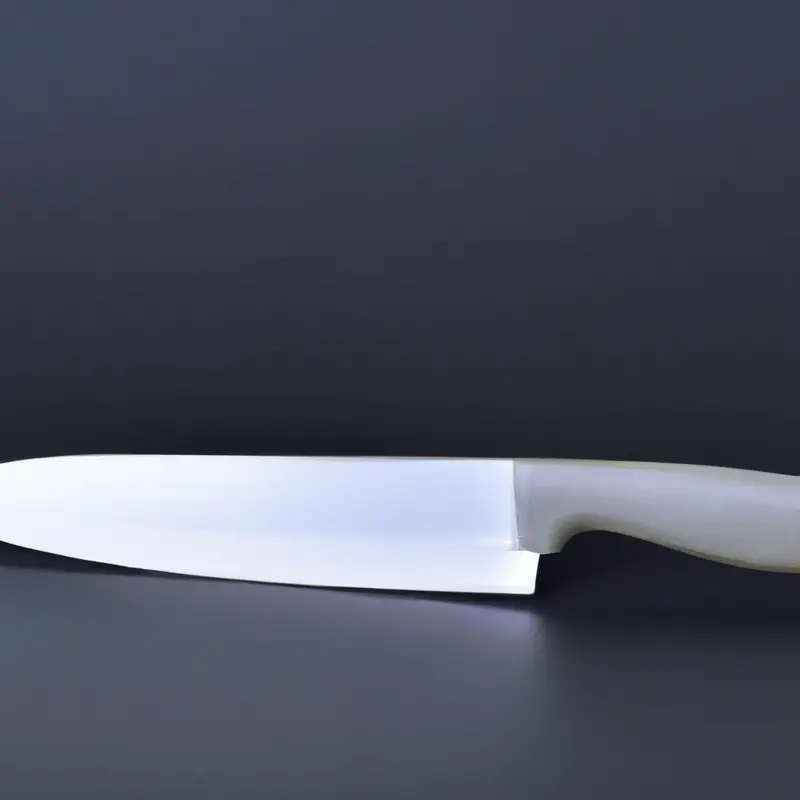
Risk of injury when using a Santoku knife for fish filleting
When using a Santoku knife for fish filleting, there is a considerable risk of injury. The Santoku knife’s shape is not designed for precise filleting, which can cause slips, cuts, and even amputations.
The lack of flexibility in the blade can also make it challenging to maneuver around bones and delicate fish meat.
Additionally, the thicker blade of a Santoku knife can require more force to cut through the fish, making it more difficult for inexperienced users to control the knife’s movements. It is highly recommended to use a specialized fish filleting knife instead of a Santoku knife to avoid the risk of injury.
However, if you insist on using a Santoku knife, it’s essential to practice caution, hold the knife firmly, and use a proper cutting technique to minimize the risk of injury.
How to choose the right Santoku knife for fish filleting
When selecting a Santoku knife for fish filleting, there are several factors to consider. Here are some tips on how to choose the right Santoku knife for fish filleting:
- Blade Length: Choose a Santoku knife with a blade length of at least 7 inches. This size provides enough space for filleting large fish without damaging the blade’s tip.
- Blade Material: Look for a Santoku knife with a high-carbon stainless steel blade. This material is durable, long-lasting, and easy to sharpen.
- Blade Thickness: The blade should be thin enough to allow for precise cuts and flexible enough to glide along the fish’s bones without breaking or bending.
- Handle Material: Choose a Santoku knife with a comfortable and sturdy handle that provides a secure grip. Look for handles made of wood, plastic, or composite materials.
- Price: Price can play a significant role in purchasing decisions. High-quality Santoku knives for fish filleting can be expensive, but they are worth the investment. Consider how frequently you will be filleting fish and how important the quality of the knife is to your cooking experience.
By taking these factors into account, you can choose a Santoku knife that will make filleting fish a more effortless and enjoyable experience.
Comparing Santoku knives to other fish filleting knives
When it comes to filleting fish, there are a variety of knives available for the job. While a Santoku knife can be used to fillet fish, it is not specifically designed for that purpose.
Compared to other fish filleting knives, Santoku knives usually have a shorter and wider blade.
This can make it more difficult to get the precise cuts needed for filleting. Additionally, the flat blade of a Santoku knife is not as suitable for removing bones as the flexible, tapered blade of a fish filleting knife.
However, Santoku knives have their own advantages.
They are versatile and can be used for a variety of kitchen tasks, such as chopping vegetables and slicing meat. They also have a design that encourages a more efficient and comfortable chopping motion.
Ultimately, the best knife for fish filleting will depend on personal preference and experience.
It is important to choose a knife that feels comfortable and balanced in your hand, with a blade that is sharp and flexible enough for the task at hand.
Understanding the importance of the right knife for the job in the kitchen
Choosing the right knife for the job is crucial in the kitchen. Not only does it enhance the cooking process but also ensures that you achieve the desired results.
Every knife has a specific purpose and using the wrong knife for a task can not only make the job more time-consuming but also lead to damages, injuries, and improper cuts.
Therefore, having a proper understanding of the right knife for the job is essential to ensure efficient and safe cooking. A Santoku knife is a versatile and useful knife in the kitchen, but it is not the ideal choice for filleting fish.
Final Verdict
A Santoku knife can be used for filleting fish with careful consideration and proper technique. While it may not be the traditional choice, the versatility and functionality of the Santoku knife make it a viable option for filleting fish at home.
Remember to choose the right Santoku knife, sharpen it properly, and maintain it regularly to ensure the highest level of performance and safety.
It’s essential to have the right knife for the job in the kitchen, and a well-chosen and cared-for Santoku knife can be a valuable addition to your culinary tools. Whether you’re a professional chef or an enthusiastic home cook, understanding the anatomy and capabilities of your knives is essential for efficient and safe food preparation.

